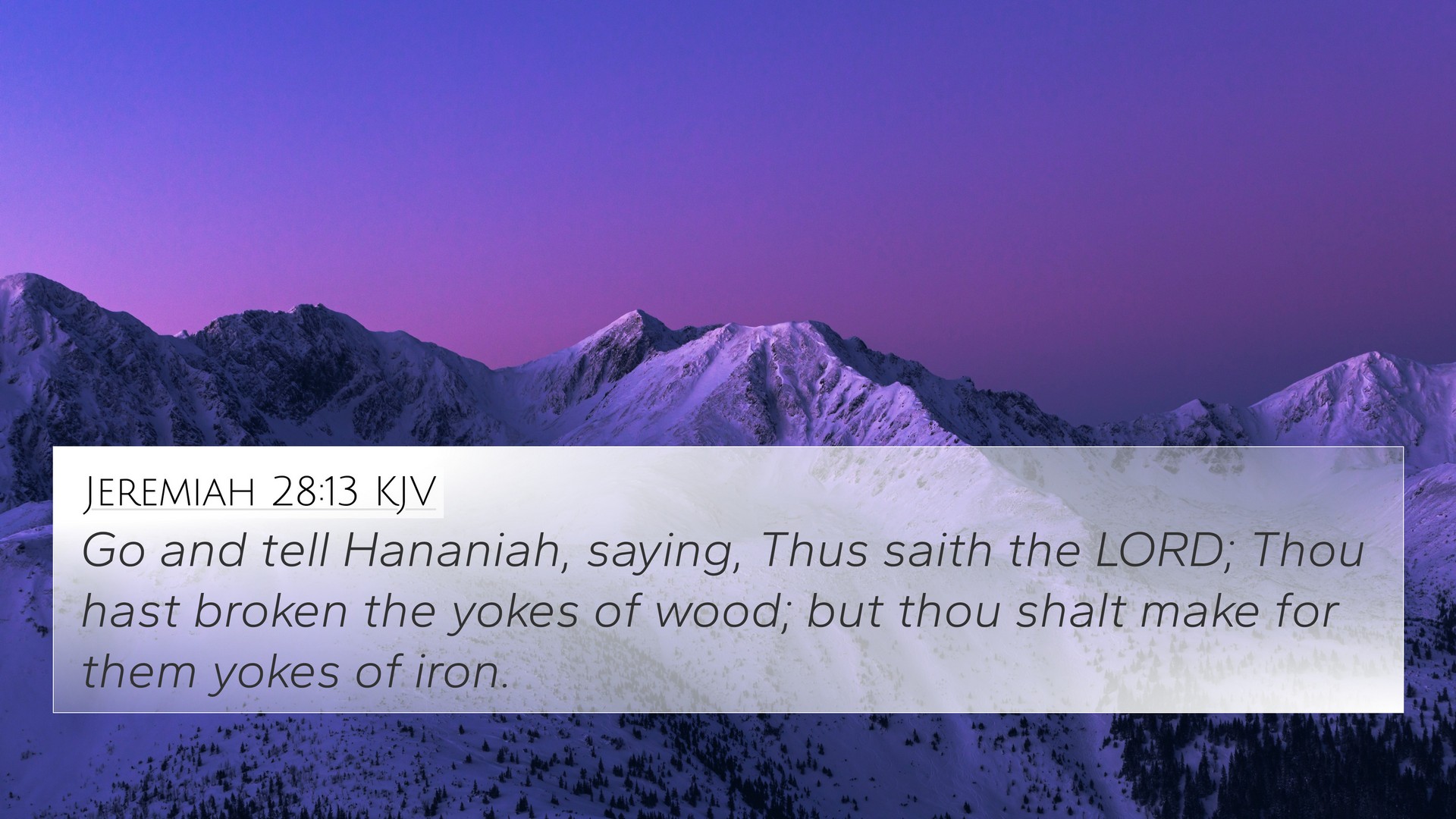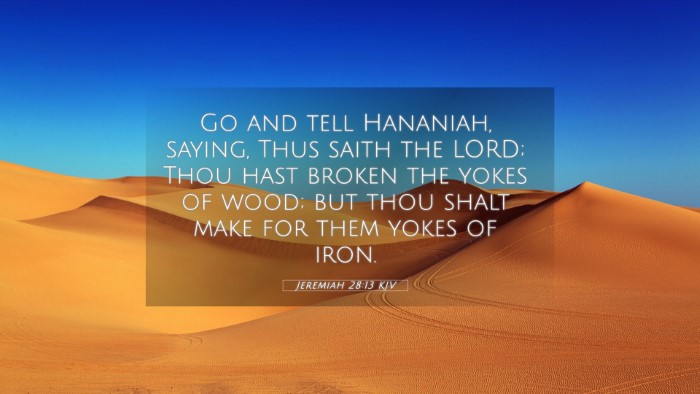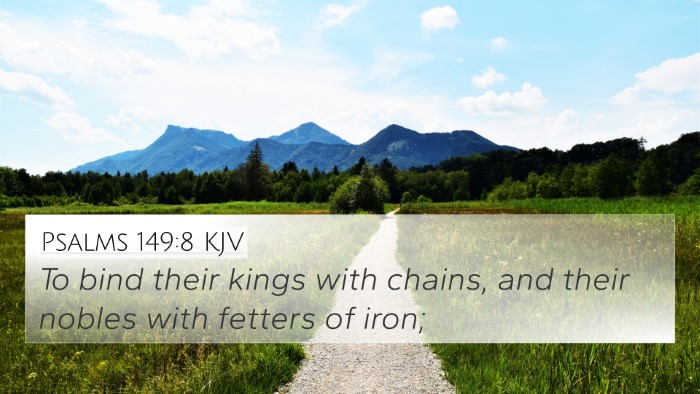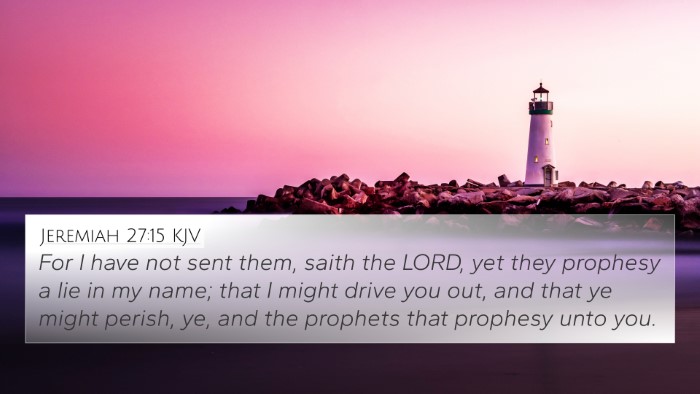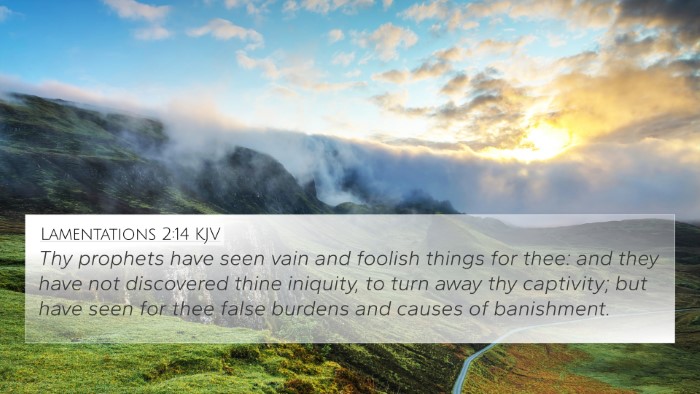Understanding Jeremiah 28:13
Text of Jeremiah 28:13: "Go, and tell Hananiah, saying, Thus saith the LORD; Thou hast broken the yokes of wood; but thou shalt make for them yokes of iron."
Overview
This verse is part of a narrative where the prophet Jeremiah confronts false prophet Hananiah. It highlights the importance of true prophecy and the consequences of misleading messages. Jeremiah's statement reflects God's displeasure with Hananiah's false assertions of peace for Israel.
Commentary Insights
Matthew Henry's Commentary
Matthew Henry emphasizes the gravity of false prophecies. He notes that Hananiah's claim of breaking the yoke of Babylon represents a wishful thinking that contradicts God's true message through Jeremiah. This illustrates the distinction between hope and reality in prophetic words.
Albert Barnes' Notes
Albert Barnes asserts that the yokes of wood represent God's temporary judgment, while the yokes of iron signify a more severe and permanent form of oppression. Barnes points to how Hananiah misleads the people, creating a sense of false security about their situation under foreign rule.
Adam Clarke's Commentary
In Adam Clarke's interpretation, he highlights the materiality and implications of the yoke. Clarke digs into the symbolism of bondage and the difficulty that comes with rejecting God's truth. He asserts that iron represents an uncompromising fate that results from disobedience to God’s word.
Cross-References and Thematic Connections
This verse establishes significant connections with other biblical texts. Below are key cross-references:
- Jeremiah 27:8-11: Addresses the subjugation to Babylon and the false hopes instilled by false prophets.
- Isaiah 10:27: Discusses the breaking of bondage, connecting liberation with deliverance from oppression.
- Lamentations 3:27: Speaks about bearing the yoke in youth, emphasizing the lesson derived from hardship.
- 2 Corinthians 6:14: Highlights the need to avoid being unequally yoked, correlating to the concept of alliances.
- Matthew 11:30: Jesus speaks of His yoke being easy, contrasting the burdens imposed by misguided leaders.
- Galatians 5:1: The call to stand firm in freedom touches on themes of yokes and oppression.
- John 8:32: "And you shall know the truth, and the truth shall make you free," reinforcing the importance of adhering to God's truth.
Exploring Connections Between Bible Verses
Understanding Jeremiah 28:13 involves exploring the broader context of prophetic literature. The verse actively engages in thematic Bible verse connections that emphasize truth versus falsehood. By observing such connections, we can see how each text compiles into a greater narrative of faith, judgment, and redemption.
Tools for Bible Cross-Referencing
For those looking to delve deeper into the connections between Bible verses, utilize the following tools:
- Bible concordance for word searches.
- Bible cross-reference guides that link themes.
- Comprehensive Bible cross-reference materials for thematic studies.
- Bible chain references to relate verses thematically.
Conclusion
Jeremiah 28:13 serves as a reminder for the Church today to discern between true and false prophetic utterances. The consequences of misleading messages can lead to deeper spiritual yokes that bind individuals away from God's intended freedom. Therefore, engaging in cross-referencing Biblical texts enhances one's understanding of Scripture and God's overarching messages concerning His people.
Final Thoughts
As we continue our exploration of biblical texts, the practice of comparative Bible verse analysis becomes vital in forming a holistic understanding of God's word. By recognizing the connections between Bible verses, we cultivate a more profound faith rooted in the consistency and reliability of Scripture.
